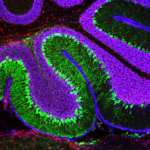MC3 Research Labs
Robertson Research Lab

The Robertson Research Lab investigates novel uses of cord blood cells for future clinical applications. Our group currently focuses on treatments for leukodystrophies and lysosomal storage disorders among others. Some of our work demonstrates the ability of cultured cord blood cells to increase re-myelination after insult to brain nerve tissue in mice. Our work includes culturing cell subsets from cord blood and characterizing with in- vitro and in-vivo studies to determine mechanism of action.
We have recently expanded the lab and moved into newly renovated laboratory space at the Chesterfield Building in Durham. We now have multiple cell culture rooms and additional bench space to accommodate future growth.
Collaborator Research Labs
The Khasraw Tumor Immunobiology Lab (TIL)
The TIL is committed to transforming cancer treatment by integrating translational research, clinical trials, and systems biology to challenge traditional therapeutic approaches. We focus on unraveling the complex interactions between cancer and the immune system, using both wet and dry lab methods, including computational modeling, in vitro systems, and in vivo models, to investigate how tumor- and immune-intrinsic factors drive disease progression, immune evasion, and therapy resistance.
The Hickey Lab
This Hickey Lab is a diverse set of engineers and scientists solving health problems by using and developing systems biology tools and technologies to describe and control spatial relationships between cells in tissues. Spatial is their specialty. The Hickey Lab focuses on describing the complex spatial networks of cell interactions within the body and how these coordinate to provide function in healthy tissue, how they break down in disease, and how to exploit them therapeutically.